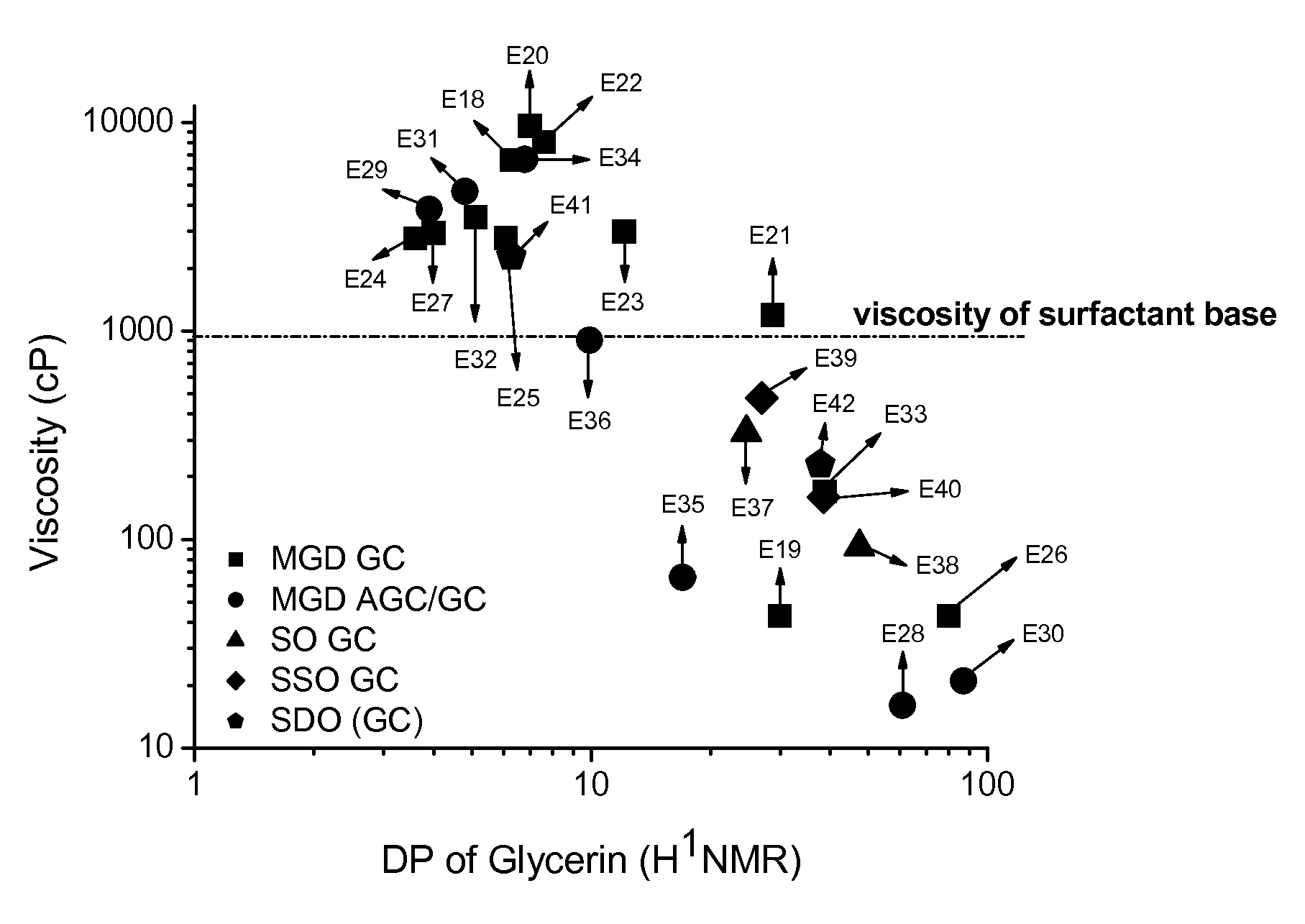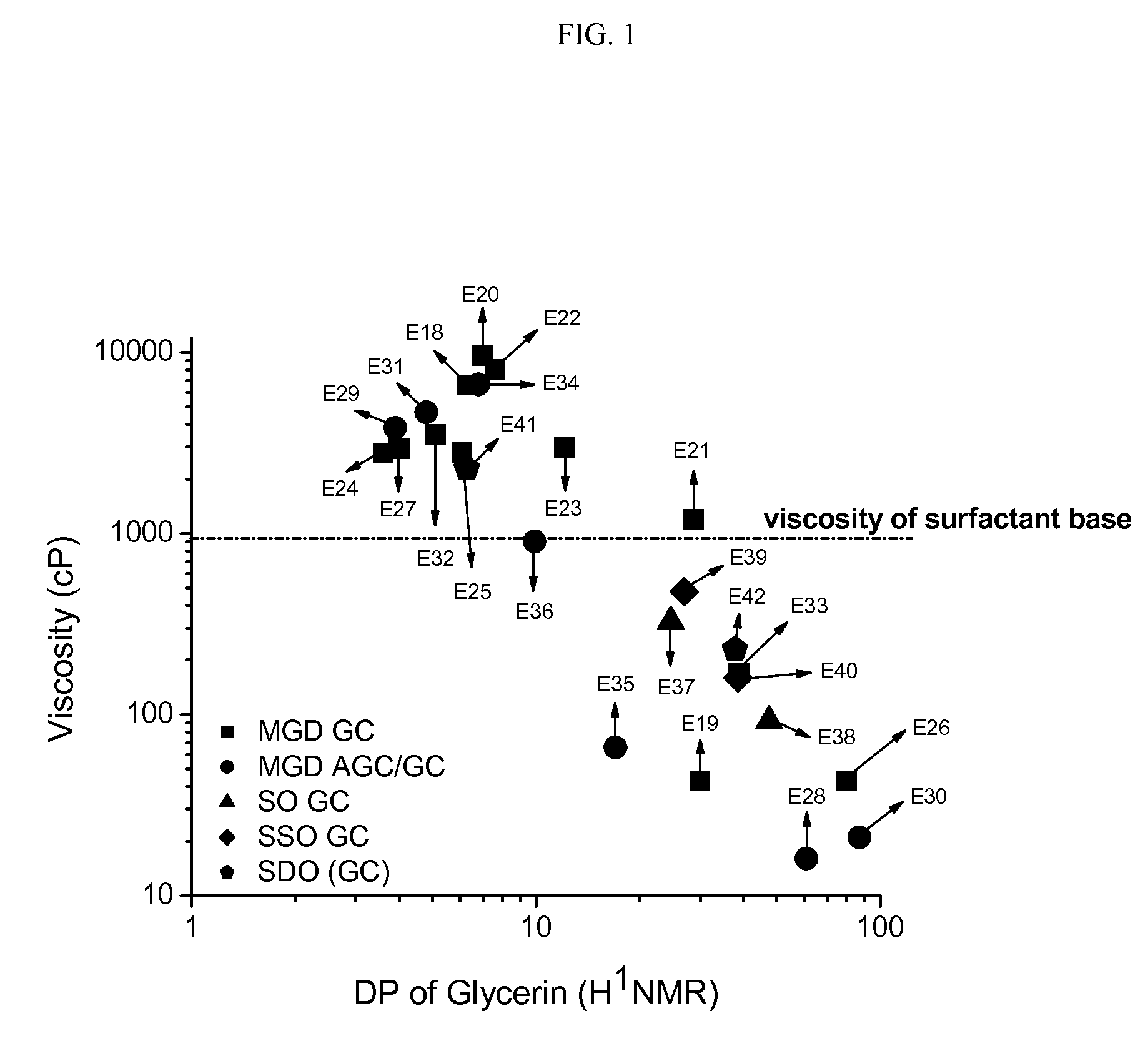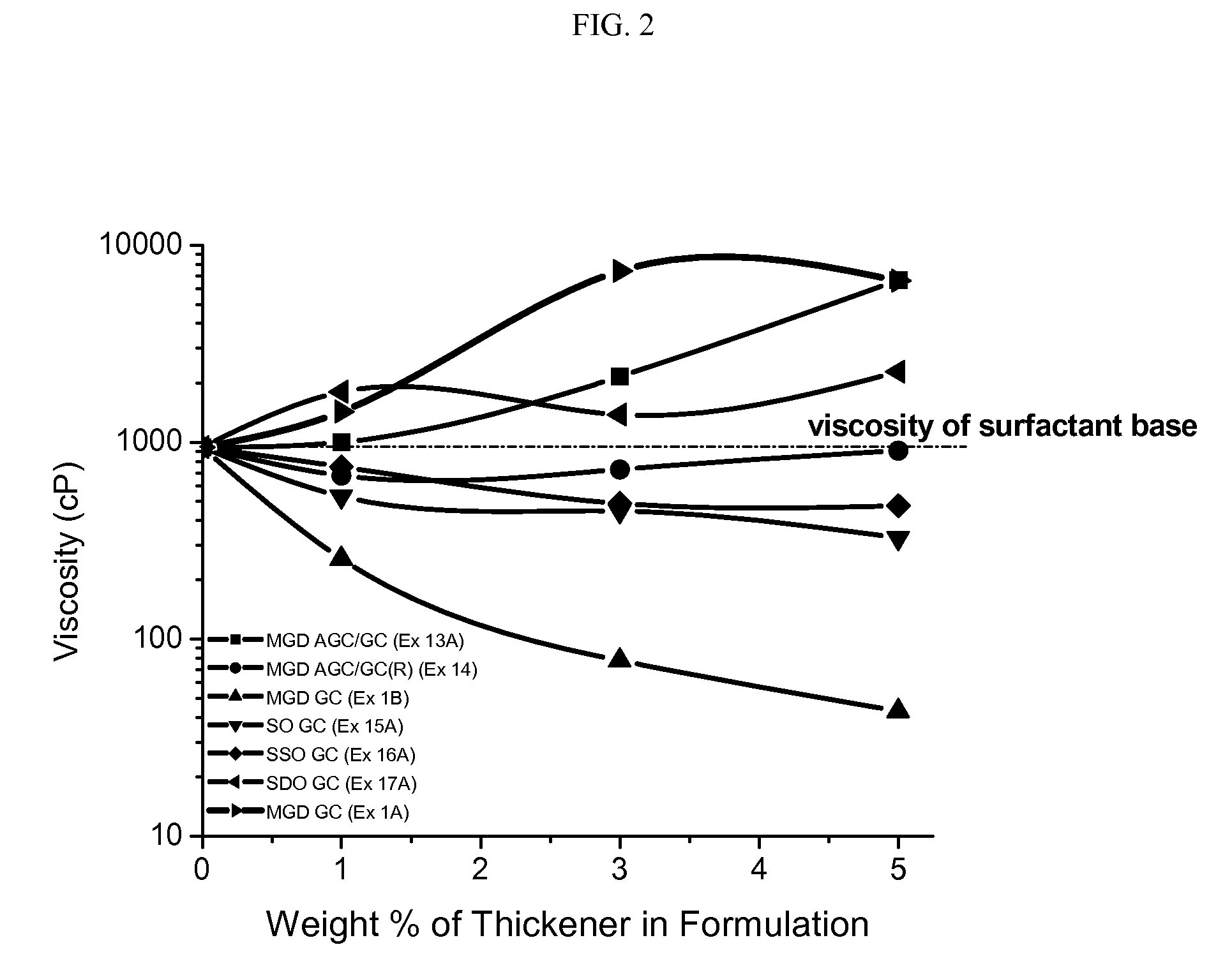Polyglyceryl compounds and compositions
a technology of polyglyceryl and composition, applied in the field of polyglyceryl thickeners and compositions, can solve the problems of unsustainable eo, 1,4-dioxane is not considered to be credible health or safety risk, and ethoxylation requires enormous volumes of eo, so as to achieve the effect of enhancing the viscosity of compositions
- Summary
- Abstract
- Description
- Claims
- Application Information
AI Technical Summary
Benefits of technology
Problems solved by technology
Method used
Image
Examples
example 1
Preparation of Polyglyceryl Thickeners (E1-E17)
[0221]Polyglyceryl thickener composition E1 was prepared as follows: to an appropriately-sized vessel fitted with N2 sparge, reflux condenser, graduated addition funnel, and NIR reaction probe, 0.058 moles of methyl glucose dioleate (MGD), 0.050 moles of glyceryl carbonate and 0.0058 moles of Ca(OCH3)2 were added. The mixture was heated to about 80° C. and placed under vacuum to degas the mixture. The vacuum was broken and the mixture then heated slowly to 190° C. under N2 sparge with appropriate agitation. After equilibrating at 190° C. for 30 min, GC (degassed, 1.15 moles) was slowly added to the reactor over 2.5 hr. After completion of the addition, the reaction mixture was stirred at 190° C. until all of the glycerol carbonate was consumed. All degassing steps (moisture level measurements), reaction progress and GC consumption were monitored in situ via real-time NIR analysis. After the reaction was complete the material was cooled ...
example 2
Properties of Polyglyceryl Thickeners
[0227]Examples E1-E17 were characterized for Average Degree of Glyceryl Polymerization and Hydrophilicity Index in accord with the respective Procedure and Test above. For those reaction products that included two phases, the phases were separated from one another by decanting off the top layer. The top phase / layer was identified as “A” and the bottom phase was identified as “B.” For example, the top phase of Inventive Example, E1 is identified as Inventive Example E1A, whereas the bottom phase of Inventive Example E1 is identified as Example E1B. Average Degree of Glyceryl Polymerization and Hydrophilicity Index for the resulting compositions are reported in Table 3 below.
[0228]
TABLE 3Properties of Inventive Polyglyceryl ThickenersEX. #Glyceryl DPHydrophilicity IndexE1A6.30.60E1B29.91.47E2A7.00.66E2B28.61.52E3A7.60.65E3B12.11.82E4A3.60.43E5A6.10.51E5B79.72.22E8A4.00.48E961.01.59E10A3.90.52E10B87.02.38E11A4.80.62E12A5.10.52E12B38.81.16E13A6.80.63...
example 3
Preparation of Comparative Examples (C1-C8) and Examples (E18 to E42)
[0231]Liquid cleanser formulations were prepared as follows: to a beaker fitted with a mechanical stirrer and hotplate, water, ammonium lauryl sulfate, and ammonium laureth sulfate were added. This was mixed at low-medium speed and heat was slowly applied to the batch to increase the temperature to 75° C. When the batch reached 75° C., cocamide MEA and a particular commercially-available thickener / test material was added. Heating was stopped after the ingredients were completely dissolved and the batch was allowed to cool to approx. 25° C., while mixing was continued at medium speed. When the batch reached 25° C., sodium chloride and DMDM hydantoin were added and mix until completely dissolved. pH was adjusted to 6.4±0.2 using citric acid or sodium hydroxide solution. Water was added in q.s. to 100%. The composition of the various comparative compositions (and weight percentages of ingredients) are shown in the Tab...
PUM
| Property | Measurement | Unit |
|---|---|---|
| Zero Shear Viscosity | aaaaa | aaaaa |
| temperature | aaaaa | aaaaa |
| temperature | aaaaa | aaaaa |
Abstract
Description
Claims
Application Information
 Login to View More
Login to View More - R&D Engineer
- R&D Manager
- IP Professional
- Industry Leading Data Capabilities
- Powerful AI technology
- Patent DNA Extraction
Browse by: Latest US Patents, China's latest patents, Technical Efficacy Thesaurus, Application Domain, Technology Topic, Popular Technical Reports.
© 2024 PatSnap. All rights reserved.Legal|Privacy policy|Modern Slavery Act Transparency Statement|Sitemap|About US| Contact US: help@patsnap.com










